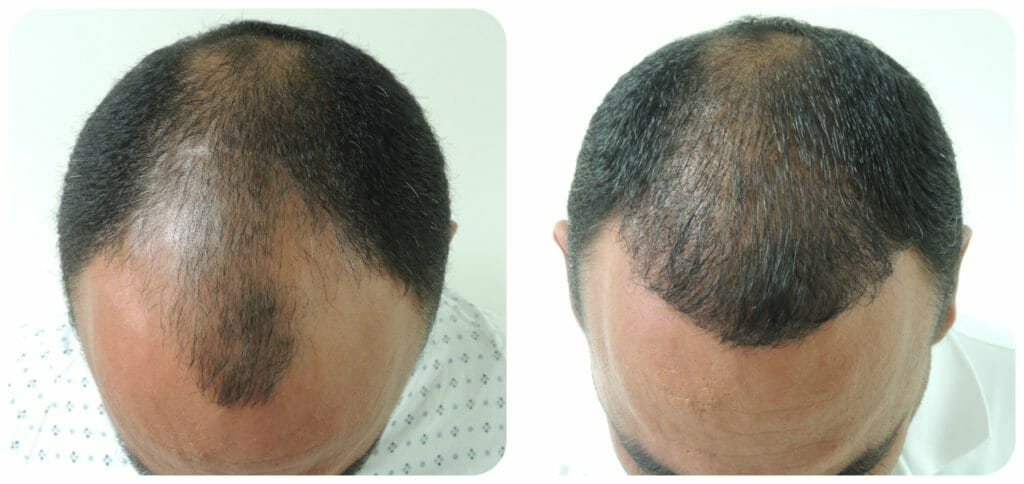Your Complete Guide to Hair Transplants
Is a Hair Transplant Permanent? Everything You Need to Know
Have you been witnessing that your hair stopped growing as fast as it used to? Have you noticed how your new hair strands are thinner and thinner every day? Perhaps, you are noticing your scalp more. It might be a sad realization, but you might be among the thousands of people who are suffering from baldness.
It is estimated that in the United States alone, around 35 million men and 20 million women suffer from some type of baldness, such as a receding hairline, thinning hair, and accelerated hair loss. We understand that facing baldness affects people’s image and self-esteem in different ways since hair is a reflection of youth, health, and vitality.
However, what was once an undeniable reality is now a treatable condition. Among all of the options available, the newest techniques in hair transplant offer an unrivaled solution to treat baldness. For the right patient, a hair transplant can offer unbelievable results: a head full of thick, healthy, glossy hair that grows and is 100% natural.
Why waste your time, money, and hopes on expensive shampoos and fad treatments when you can achieve real improvement with a hair transplant?
Is a hair transplant permanent?
Before deciding whether a transplant is worth it or not, you’re probably wondering how long does a hair transplant actually lasts. (Particularly if you are tired of trying every OTC ‘solution’ out there with no luck.)
Short answer: yes, hair transplants are permanent. Longer answer: if an experienced surgeon determines that you are a candidate for hair transplant, then, the procedure will give you permanent results and a lifetime of healthy hair growth.
The transplanted hair is taken from an area of your scalp that has healthy hair growth, hence, more genetically resistant to hair loss and baldness.Your newly transplanted hair will grow naturally. And while it will still age and go grey and thin, as it’s normal; transplanted hair is more resistant.
The best hair transplant method


In order to understand how it’s possible to provide a permanent solution to what once was a permanent problem, you need to learn more about hair restoration techniques.
Long gone are the days of toupe-looking hair transplants with unnatural patterns. The evolution of hair transplant methods has made it possible for patients to achieve natural results, with a comfortable procedure, a faster recovery time, and healthy hair that blends seamlessly.
Understanding the hair transplant procedure
Surgical hair restoration has been around since the 1960s, but methods have definitely evolved. Nowadays, there are two main methods employed for hair transplants:
The Strip Method: Also known as Follicular Unit Strip Surgery, is a procedure where the surgeon takes a donor strip of hair from the lower back area of the scalp, divides it into small grafts and implants them where needed.
Micro-Hair Transplant: Also known as Follicular Unit Extraction (FUE), is the newest most advanced technique of hair transplant available. During this process, the doctor extracts a single follicular unit of hair from a section of your head with healthy hair growth (usually the lower back area, again) and implants it where needed. Since a micro hair transplant is done with individual follicular units, you’ll achieve the most natural look possible. This is a very detailed procedure during which your surgeon will graft anywhere between 1,000 to 2,500 hair units. When getting ready to get a hair transplant done, your doctor will discuss with you how to make it look more natural, such as the hairline that he or she will follow when implanting the grafts.
Q&A to consider before getting a hair transplant
Am I a good candidate for a hair transplant?
Your doctor will ultimately determine if you are a candidate for a hair transplant. There are some main factors that can help determine if you’ll see your hair renewed with this treatment such as:
Men who have been suffering from male pattern baldness for more than 5 years.
Men whose baldness pattern has stabilized after years of losing hair continuously.
Men and women with bald spots resulting from injuries such as scars or burns.
Men and women who have lost hair after undergoing surgery.
How long is the hair transplant procedure?
A micro-hair transplant surgery takes between 3 and 6 hours, depending on the number of grafts you need.
Will I be in pain during and after a hair transplant?
No, this procedure is performed under local anesthesia and oral sedation, so patients don’t feel anything. After the procedure, you can expect to feel some discomfort and itching, but no pain.
How to maximize the results of my hair transplant?
There are some simple things you can do in order to help your new hair follicles heal and enter the growth phase faster, such as:
Not scratching your healing scalp. You will develop small scabs after the transplant, it’s best to let them fall on their own.
Eating a healthy diet containing vitamins and nutrients that naturally promote hair growth.
Inquire about Capillus laser hair restoration therapy and mesotherapy, both used as an effective way to treat hair loss. Capillus laser hair restoration therapy stimulates the follicles while mesotherapy consists of vitamins injected into your scalp. They’re great on their own and can help support strong hair growth after a transplant.
Should I get a hair transplant?
In order to determine if you are a good candidate for a hair transplant, you should schedule a consultation with a hair restoration expert. There are several factors that only an experienced doctor should evaluate such as the cause of your hair loss and your suitability for a hair transplant. Your doctor will also explain the method and give you clear expectations as to what results you can expect.
Call VIDA Wellness and Beauty Center at (619) 738-2144 to schedule an appointment and determine if a hair transplant is good for you!